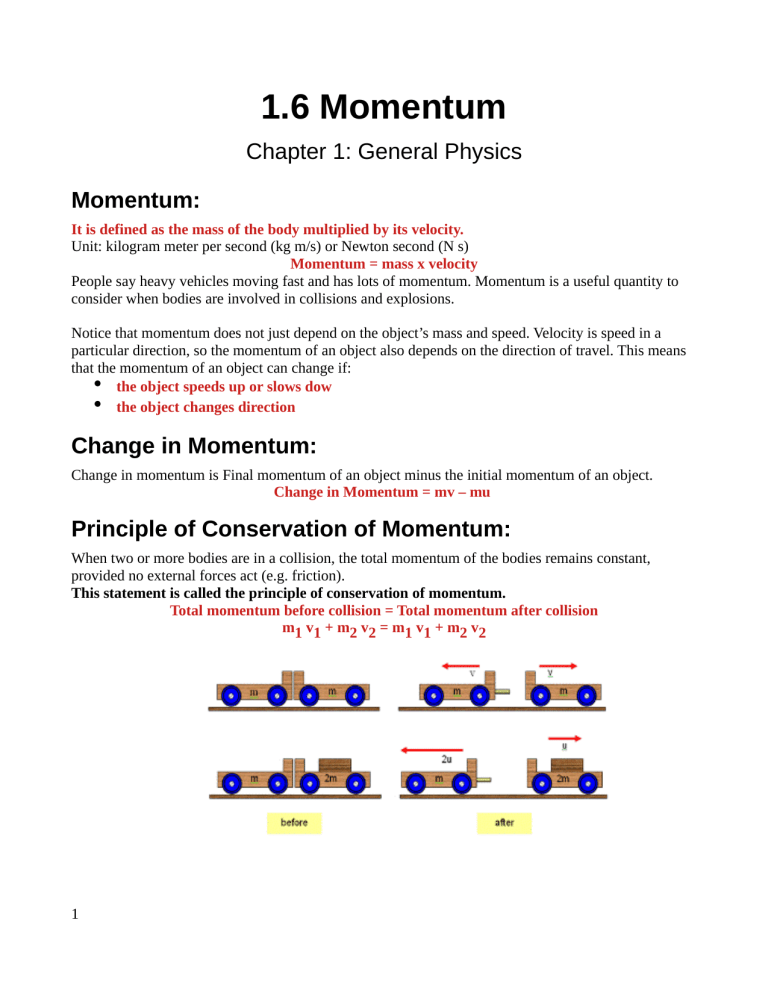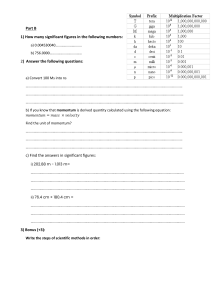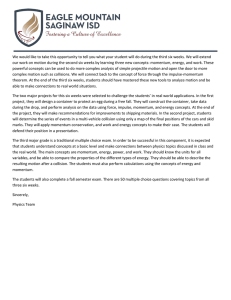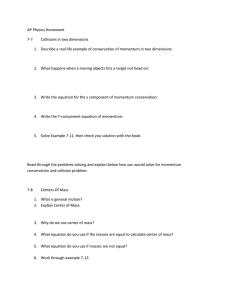Momentum in Physics: Definition, Change, and Conservation
advertisement

1.6 Momentum Chapter 1: General Physics Momentum: It is defined as the mass of the body multiplied by its velocity. Unit: kilogram meter per second (kg m/s) or Newton second (N s) Momentum = mass x velocity People say heavy vehicles moving fast and has lots of momentum. Momentum is a useful quantity to consider when bodies are involved in collisions and explosions. Notice that momentum does not just depend on the object’s mass and speed. Velocity is speed in a particular direction, so the momentum of an object also depends on the direction of travel. This means that the momentum of an object can change if: • the object speeds up or slows dow • the object changes direction Change in Momentum: Change in momentum is Final momentum of an object minus the initial momentum of an object. Change in Momentum = mv – mu Principle of Conservation of Momentum: When two or more bodies are in a collision, the total momentum of the bodies remains constant, provided no external forces act (e.g. friction). This statement is called the principle of conservation of momentum. Total momentum before collision = Total momentum after collision m1 v1 + m2 v2 = m1 v1 + m2 v2 1 Linking Force and Momentum: If a steady force F acting on a body of mass m increases its velocity from u (initial velocity) to v(final velocity) in time t, the acceleration a is given by: a= v −u t Substituting a in F=ma F= m ( v −u ) mv − mu = t t Since (mv-mu) is change of momentum: F= Change of momentum =Rate of change of momentum time Impulse: The previous equation can be rearranged to give you another quantity called IMPULSE. Force ×time=Change of momentum F × t =mv − mu Impulse=mv − mu where mv is the final momentum, mu the initial momentum and Ft is called the impulse. It is the force applied over the time interval t. Higher the force or greater the time it is applied for means the change in momentum is also greater. 2



